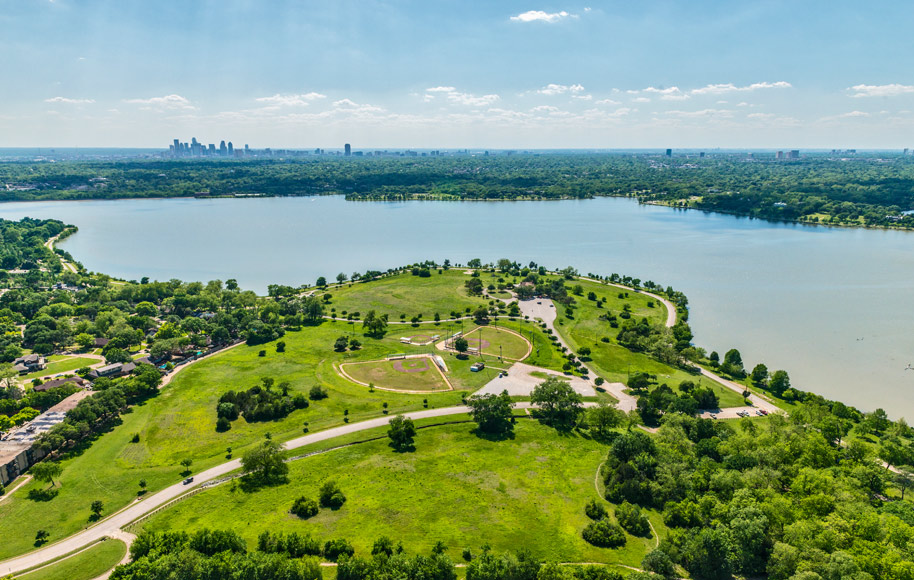
Photo by Danny Fulgencio
The shallows
Forest Atkins is the Commodore of the Corinthian Sailing Club on White Rock Lake. The club formed in 1939 and has hosted regattas and sailing events in East Dallas ever since. But as silt builds up in the lake, he worries about the future of sailing at White Rock.
On a rainy Tuesday afternoon, he notes that the club sits over about 4-1/2 feet of water, just enough to get the keels safely through to the docks. He notices more churning on the bottom from small motors and describes what he called a “White Rock racing stripe,” a mud mark formed when a sailboat capsizes and the mast penetrates several feet of silt on the lake bottom. He jokes that he is a relative newcomer to the club (there since 2002), but knows how important regular dredging is to the lake.
Dredging White Rock Lake is no simple process, but neighbors have formed a committee to start the ball rolling toward removing accumulated sediment from our neighborhood body of water.
The process
Park Board member Becky Rader announced the formation of the White Rock Lake Dredging Committee during the White Rock Task Force meeting this week. Susan Falvo, Michael Jung, Ted Barker and Becky Rader are all part of the committee.
They estimate that the dredging costs between $12-$15 million and will need to be on the next bond package, which could be up to five years from now. In the meantime, the city will need to commission a study to determine exact costs and how much sediment will need to removed. The study must be done close to the actual dredging to make sure it is accurate, and the committee estimates that the study will cost around $1 million.
The first step is for interested parties to meet with the Trinity River Authority (TRA). Falvo estimates that we are more than 5 years away from funding and completing the process, which would be the longest gap between dredging since the lake was built.
TRA can make a recommendation to the City of Dallas, which then has the option of putting the project on the next bond, as it is probably too expensive to be included in the city’s normal yearly budget. If dredging the lake makes it onto the list of bond projects, voters would need to approve the bond in a bond election. Voters passed the most recent bond last year, but other projects were deemed more important at the time.
The history
Another obstacle to the project is what to do with all the sediment. Last time the lake was dredged in 1998, a fortuitous connection reduced the cost of the project when a landowner needed his gravel pit filled in Hutchins, Texas. The dredging boat pumped sediment from the bottom of the lake through 24-inch pipes straight into the pit for nine months, creating a win-win situation. The pump inhaled a mixture of water and silt and sent it to the gravel pit, filling 200 acres of pit with four to five feet of sediment, according to Texas Parks and Wildlife. It is unclear if a similar transaction would be available this time around.
The last study that preceded the dredging was in 1994, when engineering firm Carter and Burgess found that the sediment impacted oxygen levels in the summer. That could threaten the fish population. They estimated that without dredging, the lake would fill with sediment by 2034. The White Rock Lake Foundation (WRLF) helped lead the charge last time to get the dredging funded, and will be involved again. WRLF Board President Ted Ellis is motivated to get the process started, and Falvo is also on the board of WRLF.
In the 20 years since White Rock Lake has been dredged, silt and sediment have continued to fill the lake. White Rock Creek, which filled up the lake over the course of three years when it was built in 1911, stretches 30 miles north to Frisco and eight miles south before dumping into the Trinity River. Over the last 30 years, booming construction and development replaced the farms and forests that once straddled the creek, creating more erosion and adding to the sediment that ended up in the lake.
Previous dredging occurred in 1937, 1955, 1974 as well. Read more about the lake’s depth and sediment build up here.





